David Hardy Continues to Expand Our Imagination and Influence Artists Today With His Signature Space Art
When you hear the words “space artist” images from John Berkey’s work or Chelsey Bonestell’s art come to mind. Or, you thought about David A. Hardy, the most accomplished living space artist of our time.
Either intentional or accidental, if you are interested in science fiction, you have come across his work on hundreds of book covers and magazines, be it If or Science Fiction Monthly, to name a few.
His astronomical paintings have been touted for its accuracy as much as his other worlds spark the imagination.
He has won many awards including the Best European SF award in 1987, as well as Best cover art awards in 2003, 2004, 2005, and 2007. At 82, Hardy is still very active with his fanbase, conventions and continually creating art not just of the future but connecting us closer to our galaxy. I had a chance to ask him some questions about his work and influence.
Planet of a Brown Dwarf by David Hardy
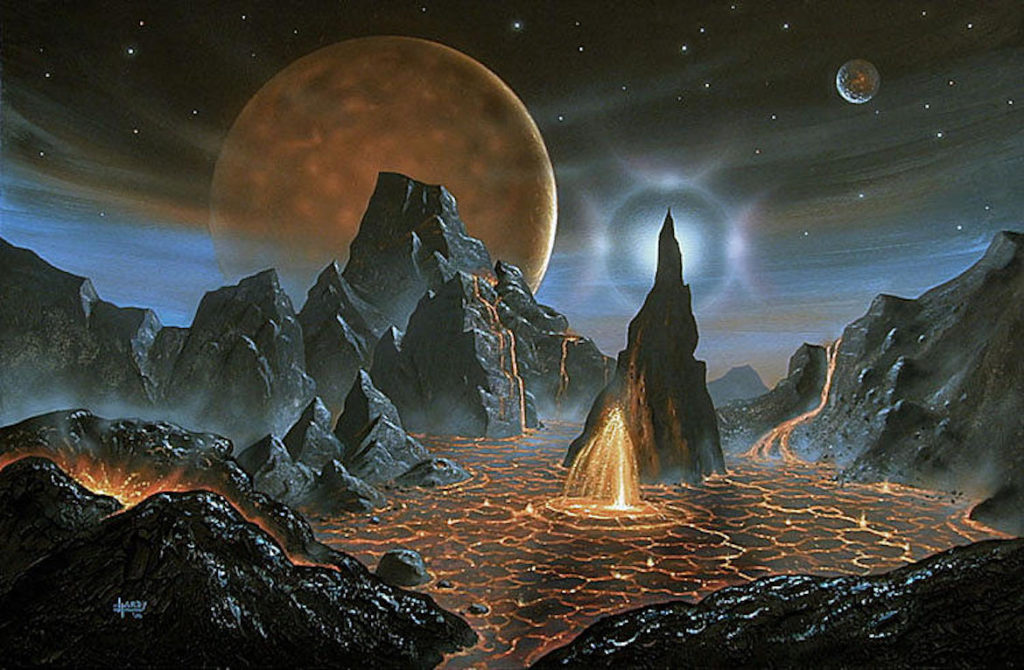
How did you become interested in painting and at what point in your life did you realize you wanted to paint space art?
In 1950 I was given a book for my 14th birthday called ‘Flights into the Future’, which was all about going to the Moon etc. Then I found in my local library ‘The Conquest of Space’, which contained the most amazing, photographic paintings of the Moon and planets by Chesley Bonestell. Later that year I saw the film ‘Destination Moon’, for which Bonestell did the designs and backgrounds. I was hooked!
Growing up, my first remembrance of space art was getting Picture Atlas of Our Universe by Roy G. Gallant. As a kid, that was my perception of the cosmos. It made me fascinated about new worlds as I stared into the artwork of that book. And then I discovered your work, and it blew my mind. Experiencing your work gave a more calculated and realistic depiction of how other worlds existed. How did you perceive the universe as a kid, and how did it all become such an important role in your life?
All I could find out in those days was in my local library, and then at the main Birmingham Reference Library, which must have been one of the best in the world. It also had an Illustrations Collection, culled from various magazines etc., which proved a very useful source. (There was no TV!)
How did science and fiction transcend in your work?
I don’t know what article that was, but I have been a reader and fan of SF since the earliest days. I went to my first SF convention in 1959, and still go to a couple a year. I’ve been to several Worldcons, have been Artist Guest of Honour at some, a also also some in the USA. But my work did not appear on a SF magazine until 1970, when ‘Visions of the Future’ came out in the UK. In 1971 my painting of Saturn from Titan, but with a duplicate of our Sphinx in a lake of liquid methane, was the first actually painted as an SF work, and appeared on the cover of F&SF. It became the first of over 70. . .
Proxima Centauri as seen from a nearby rocky world by Davi Hardy
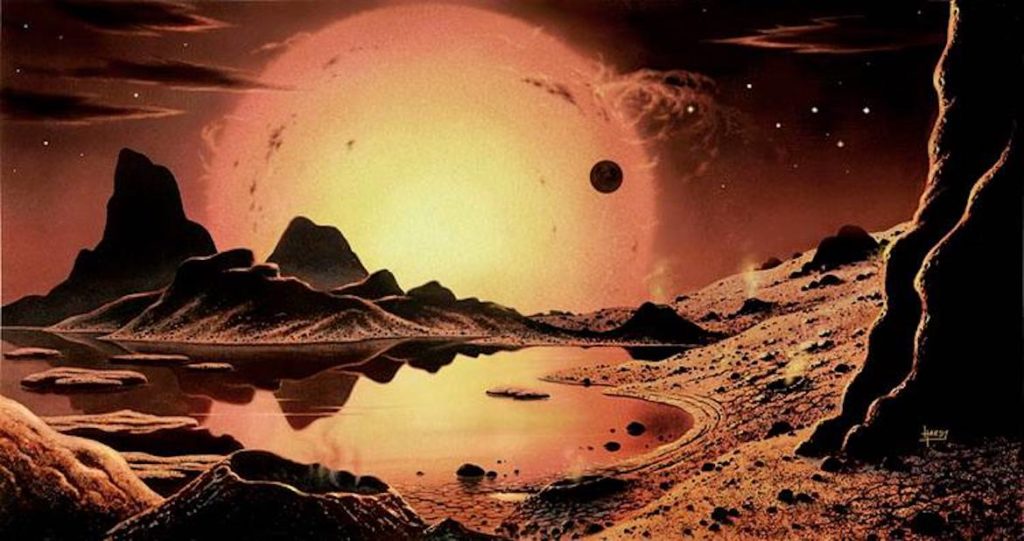
What kind of research and preparation work does it take to go into each painting?
A lot! But it is made easier now by online sites etc.
What challenges do you face and how do you continue to keep your creativity fresh?
There are many more space artists nowadays, so I have to try to keep my own work visible, and of a high enough standard. Of course, I work digitally nowadays, mainly in Photoshop on a Mac, but I still paint, and enjoy doing so,
What do you consider some of your finest moments in your career as an artist?
Hard to say. I have received several awards, including the Sir Arthur Clarke Award in 2005, and the Ordway Award in 2015. I’ve also been nominated several times for the Hugo and Chesleys — but there is a lot of competition, much of it more visible than I am today. . .
Also, my 1972 book ‘Challenge of the Stars’ (with Sir Patrick Moore, revised in 1978 as New Challenge) seems to have proved as big an influence on the modern generation of space artists as ‘Conquest of Space’ was for me. That is a matter of great pride for me!
Terraforming Mars by David Hardy
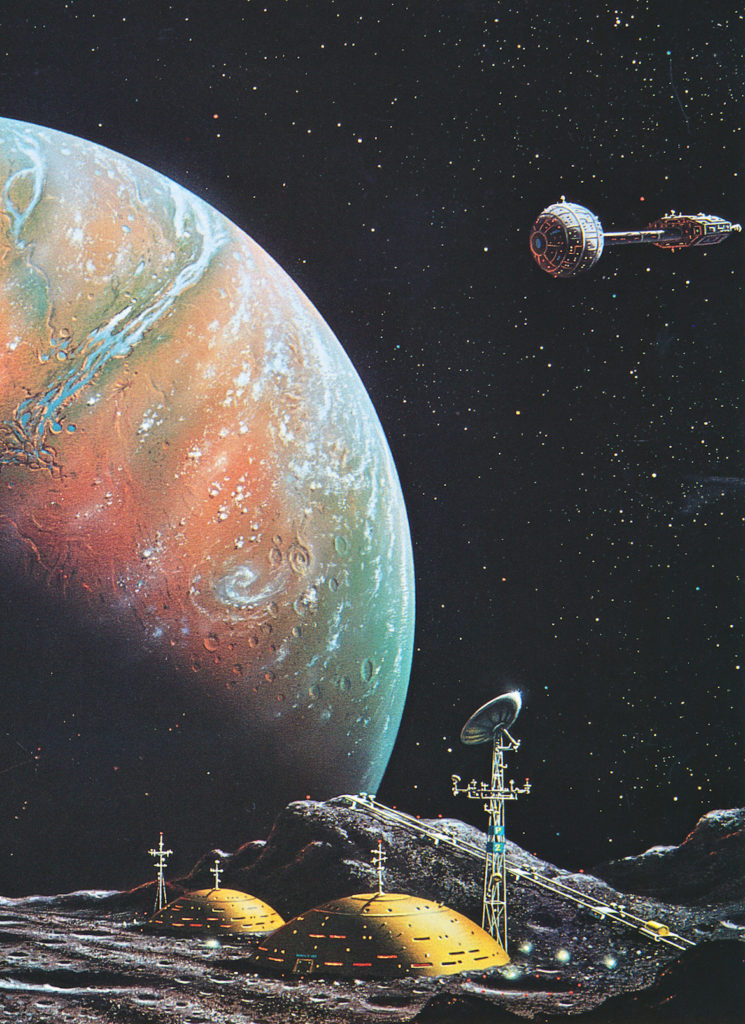
I am repeating the idea of influence, but I also want to ask how you have been an influence to your daughter and granddaughter who are both creatively successful?
I think you’d need to ask them! My daughter Meraylah (meraylah.co.uk) is certainly successful as an artist and illustrator. My grandson Aidan Booker has gone in another direction, and at 17 is producing the most amazing miniature 3D models — see Pocketwatch Toys: http://pocketwatchtoys.co.uk/ So while it is obviously in the genes, they have gone their own ways.
You have witnessed technology transform and change throughout the years. Has anything surprised you? What do you think of futurism and how technology and our view of space will become in relation to life on this planet?
I was actually surprised by Apollo, because it all happened too fast and was a dead-end. We should have gone on to build bases on the Moon, and travel to Mars, and so on — the way I and others had been depicting the development of space travel. So I have actually been disappointed by the way it has all stagnated. It is only by the appearance of people like Elon Musk (rather like benefactors in SF novels by authors like Ben Bova and Charles Sheffield) that spaceflight is becoming rejuvenated.
What advice do you have for the future of space artists?
Use the work of others to guide you, but don’t copy. Keep up-to-date with developments, and try to be first to depict them! And be sure to learn the basics, like getting your science right, and ensure that you always think ‘where is the light coming from?’!

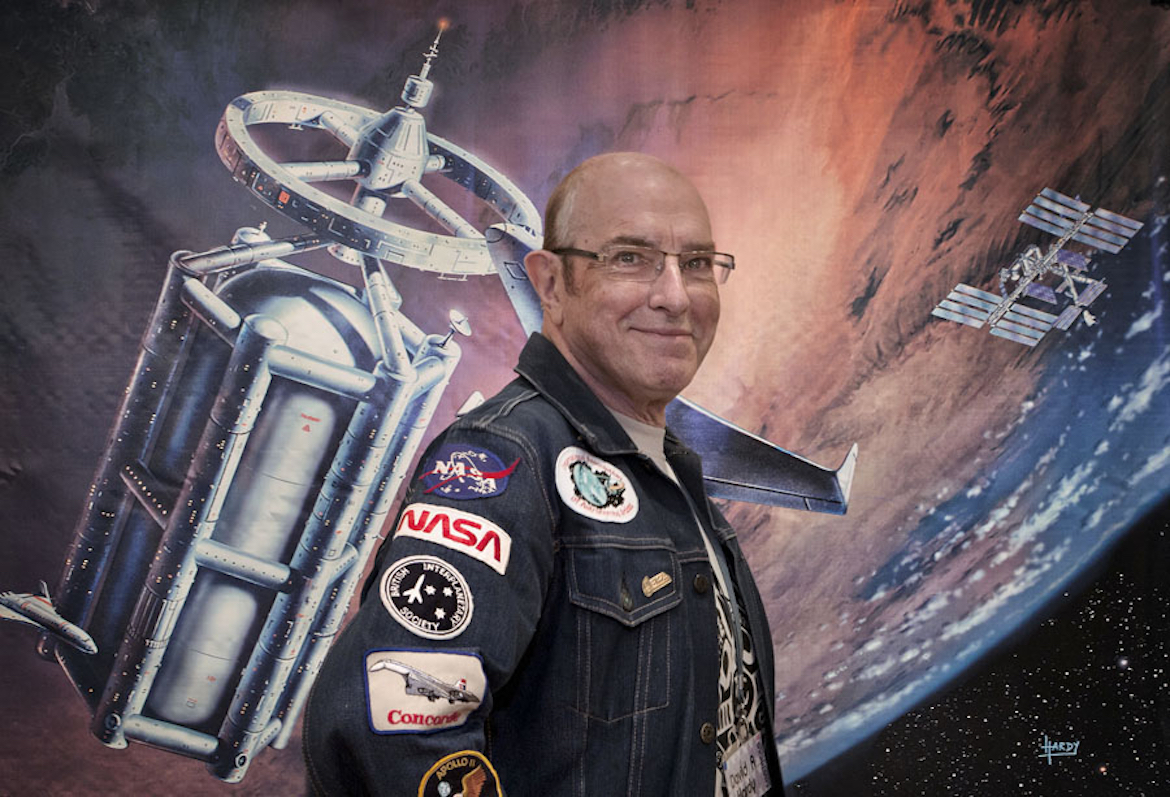
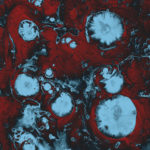

No Comment! Be the first one.